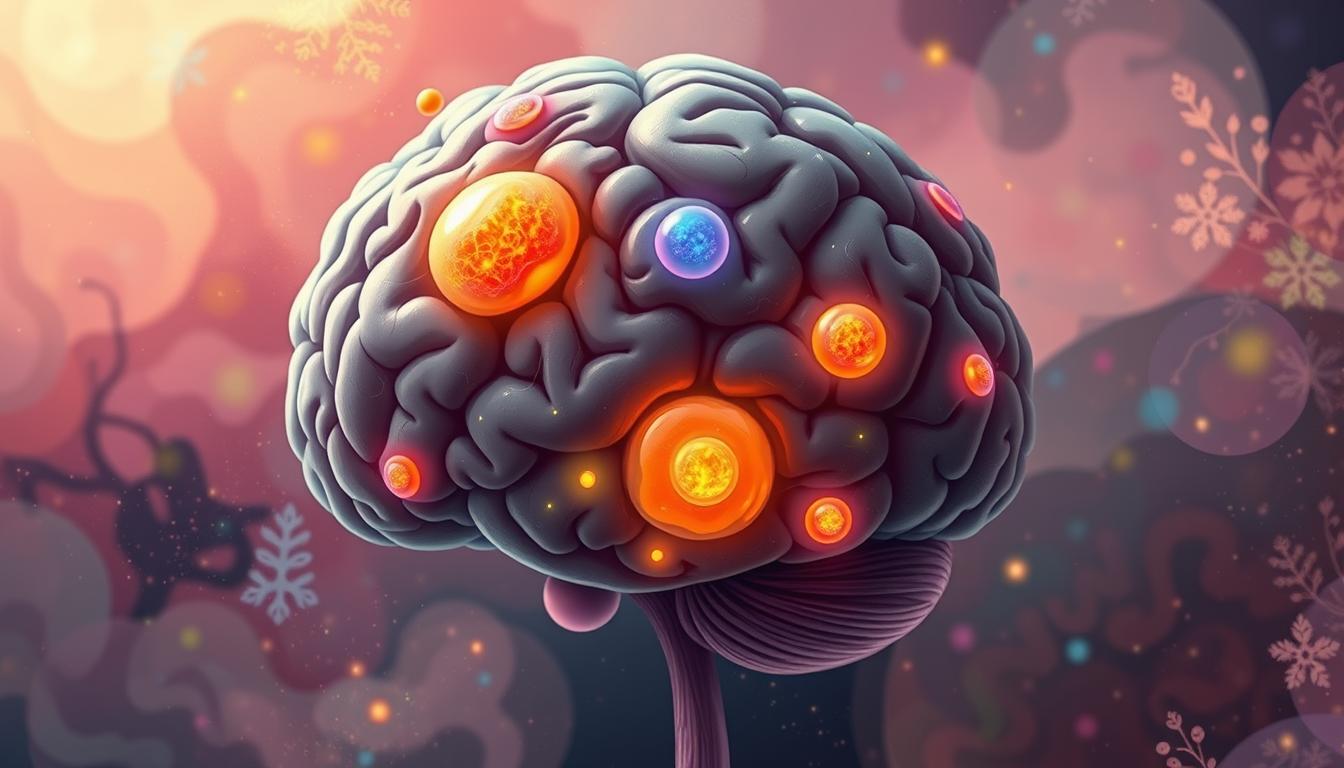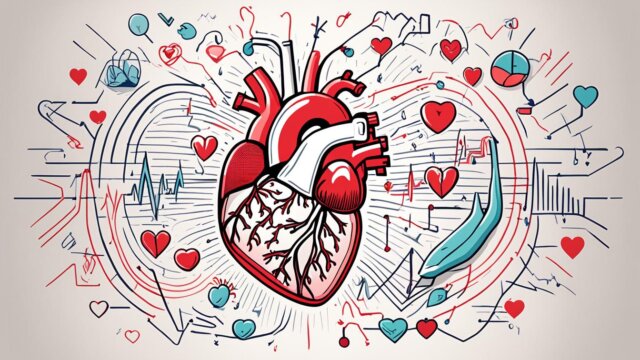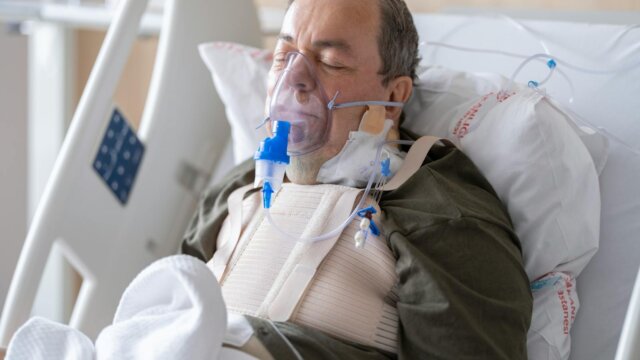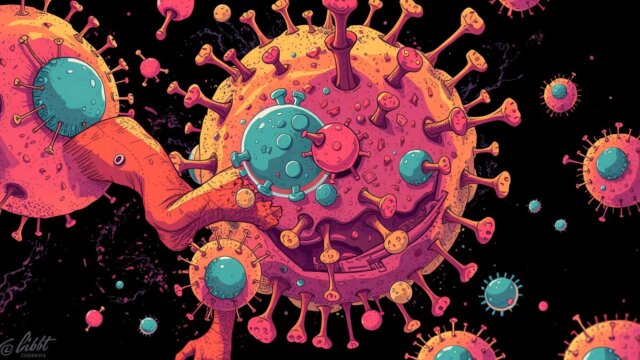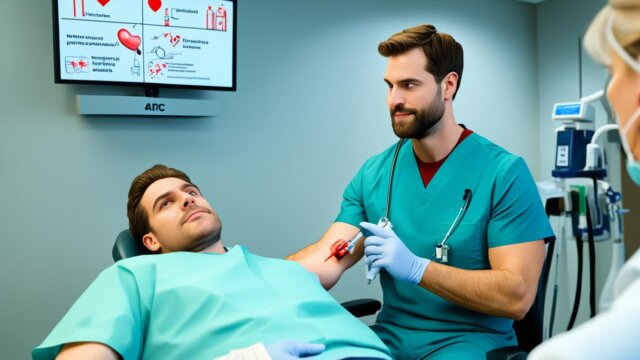FTC disclaimer: This post may contains affiliate links and we will be compensated if you click on a link and make a purchase.
Every year, almost 5,000 kids get diagnosed with brain tumors. These are the most common solid tumors in kids and teens. Brain tumors can be very serious and might harm a child’s brain and thinking skills. It’s important to know about childhood brain tumors to help these kids get better care.
Key Takeaways
- Brain tumors are the most common solid tumors in children, affecting close to 5,000 children each year.
- Pediatric brain tumors are the most common type of solid childhood cancer and the second leading cause of pediatric malignancies after leukemia.
- Brain tumors in children tend to occur more often in those younger than 5 years old.
- Certain genetic syndromes and radiation therapy treatments can increase the risk of brain tumors in children.
- Symptoms of pediatric brain tumors can vary depending on the tumor’s location, size, and growth rate.
What Are Childhood Brain Tumors?
Overview and Statistics
Pediatric brain tumors are growths in or near the brain in kids. These tumors can press on the brain, causing headaches and nausea. About 4,500 new brain tumors are diagnosed in kids each year. Brain tumors are the top cause of cancer deaths in kids.
There are many types of pediatric brain tumors, some grow fast, others slow. Gliomas are common, made of cells that support the brain. Astrocytomas, a type of glioma, are usually curable with surgery. Medulloblastoma and Pineoblastoma are aggressive types of tumors.
Some brain tumors are cancerous, others are not. The type of tumor helps decide the best treatment. Over 5,000 kids get brain tumors each year.
Tumor Type | Characteristics |
|---|---|
Gliomas | – Most common type of brain tumor in children – Can be low-grade (slow growing) or high-grade (aggressive and fast growing) |
Medulloblastoma | – Most common type of embryonal tumor |
Pineoblastoma | – Most aggressive kind of embryonal tumor |
Craniopharyngiomas | – Noncancerous tumors that can be slow growing or fast growing |
Germ Cell Tumors | – Can spread into the spine and cerebrospinal fluid (CSF) |
Choroid Plexus Tumors | – Can be noncancerous (choroid plexus papilloma) or cancerous (choroid plexus carcinoma) |
Meningiomas | – Less common in children but can be life-threatening if they grow large enough |
Brain tumors in kids are rare. Astrocytomas are common, mostly in kids aged 5 to 8. Medulloblastomas, the most common childhood brain cancer, usually happen before age 10. Brainstem gliomas are rare, mostly in kids around age 6.
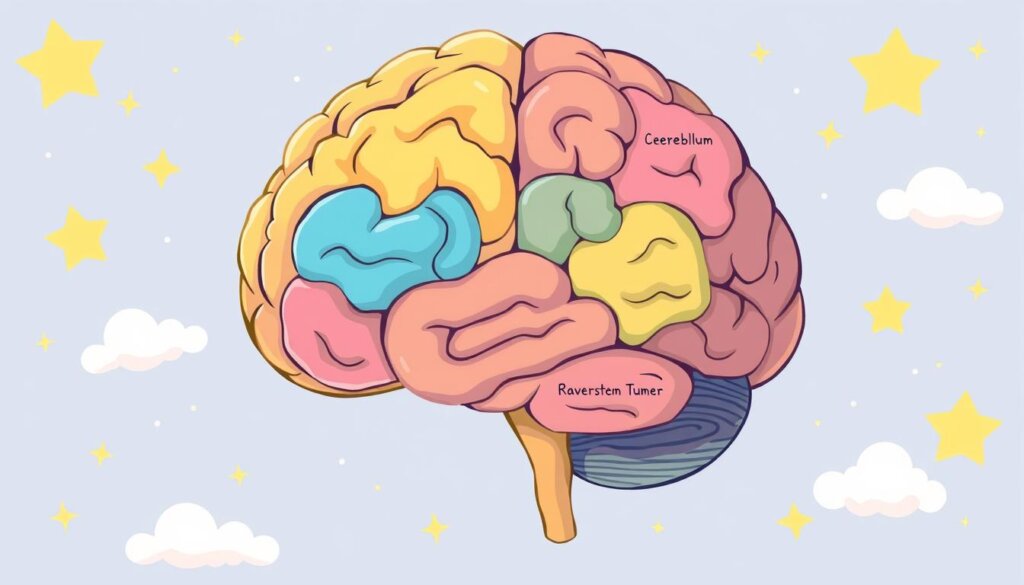
About 3 out of 4 kids survive at least 5 years after being diagnosed with a brain tumor. Young kids, especially under 3, face more risks of brain problems from tumors or treatment. Some brain tumors can be linked to other syndromes or run in families.
Symptoms of Childhood Brain Tumors
Childhood brain tumor symptoms can vary a lot. Some common signs include persistent headaches, nausea and vomiting, vision changes, imbalance, and personality or behavior shifts. Most children with headaches don’t have brain tumors. But, if a child has nausea, vomiting, and headaches together, they should see a doctor.
Other symptoms include sleepiness, hearing and speech difficulties, memory problems, and seizures. Sudden changes in these areas can mean a brain tumor. Babies might have an abnormally large head size, which could be a sign of a brain tumor.
It’s very important to get medical help if a child shows these symptoms. Early diagnosis is key for treatment. MRI scans help find brain problems, leading to the right care.

Brain tumor symptoms can look like common childhood illnesses. This makes it key for parents and doctors to watch closely. The symptoms a child has depend on where the tumor is. Even though childhood cancer is rare, it’s vital to check children with concerning symptoms.
Symptom | Potential Cause |
|---|---|
Headaches | Brain tumor, but most children with headaches do not have brain tumors |
Nausea and vomiting | Brain tumor, but can also be common in other childhood illnesses |
Vision changes | Brain tumor affecting the cerebral cortex or other parts of the brain |
Balance problems | Brain tumor near the brain stem |
Seizures | Brain tumor |
Increased head size in babies | Brain tumor causing abnormal growth |
Knowing the symptoms of childhood brain tumors and getting medical help fast is key. This helps with early diagnosis and treatment.
“Childhood cancer is rare, but it’s important for children with symptoms to see a general practitioner.”
Types of Childhood Brain Tumors
Childhood brain tumors can start in the brain or spread from another part. They can be either non-cancerous or cancerous. Common types include astrocytomas, brain stem gliomas, and more.
Common Types and Locations
Gliomas make up half of brain and spinal cord tumors in kids. They are graded by how aggressive they are. Pilocytic astrocytomas are a common type, making up nearly 20% of brain tumors in children.
Oligodendrogliomas and ependymomas are also common. Brain stem gliomas and embryonal tumors make up 10-20% each. Craniopharyngiomas and choroid plexus tumors can also occur in different parts of the brain.
It’s important for kids with brain tumors to get treatment at specialized centers. These centers have experts in pediatric brain tumors, unlike adult cancers.
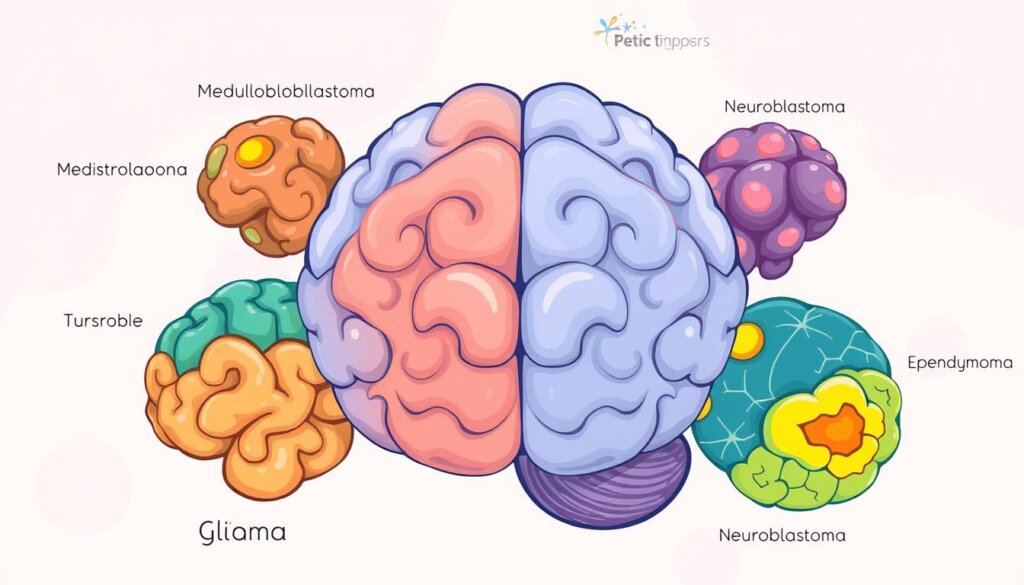
Tumor Type | Percentage of Childhood Brain Tumors |
|---|---|
Gliomas | About 50% |
Pilocytic Astrocytomas | Nearly 20% |
Oligodendrogliomas | About 1% |
Ependymomas | About 5% |
Brain Stem Gliomas | 10-20% |
Embryonal Tumors | 10-20% |
Craniopharyngiomas | About 4% |
Specialized centers treat many types of Pediatric Brain tumors, including DIPG, ATRT, Medulloblastoma, and Meningioma.
“It is crucial for children with brain tumors to receive treatment at a pediatric brain tumor center due to differences in tumor types and locations compared to those in adults.”
Knowing about Pediatric Brain Tumor Types and their locations is key. It helps in giving the right care for kids with Common Childhood Brain Cancers.
Diagnosis and Testing
If a child shows signs of a brain tumor, a detailed check-up is key. This often starts with a visit to a pediatrician or the emergency room. There, the child will get scans like MRI and CT scans.
MRI scans are often chosen first. They show more detail of the brain and spinal cord without using harmful radiation. This is different from CT scans.
Special MRI methods, such as MRA, MRS, and fMRI, help doctors better understand the tumor and diagnose it. PET scans are also used to spot fast-growing tumors in kids.
If a tumor is found, a neurosurgeon will decide the next steps. This might include a biopsy to check the tumor’s type and how fast it grows. Pathologists then look at the biopsy to tell if the tumor is cancerous or not. This is key for planning treatment and knowing the outlook.
Diagnostic Tool | Description |
|---|---|
MRI Scan | Detailed images of the brain and spinal cord using radio waves and magnets without radiation exposure. |
CT Scan | Detailed images of soft tissues, blood vessels, and bones using X-rays, but with less detail compared to MRI. |
Biopsy | Removal of a tissue sample for microscopic examination to determine the exact type of tumor. |
Cerebrospinal Fluid Analysis | Examination of the fluid surrounding the brain and spinal cord for cancer cells or tumor markers. |
Top pediatric cancer centers use the latest tech and teams for care. They use the NanoString® Digital Molecular Barcoding System to study tumors. They also have teams for cancer genetics to help decide on treatment.
Diagnosing childhood brain tumors is a team effort. It includes doctors, advanced scans, and lab tests. This ensures the right diagnosis and treatment plan.
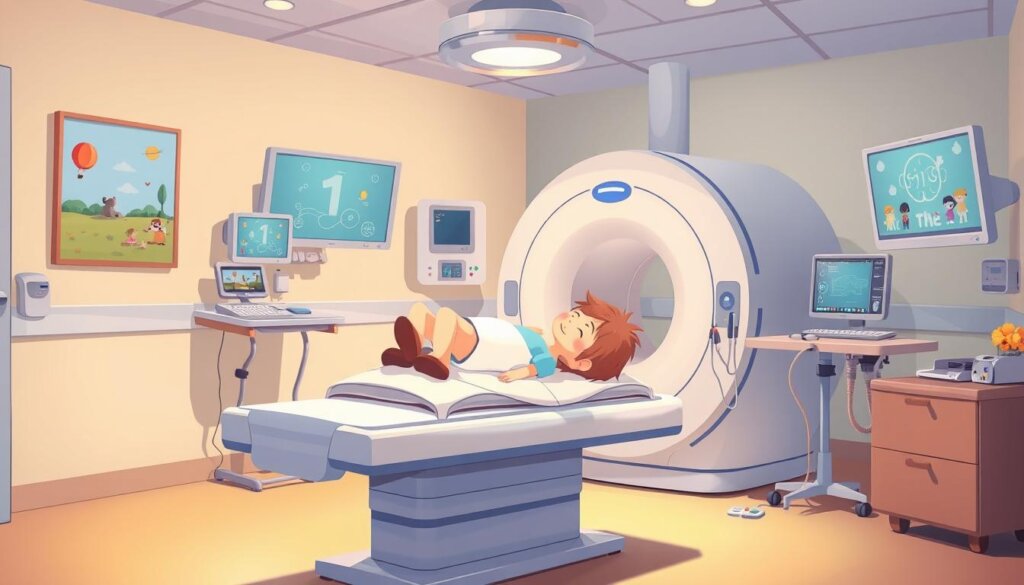
Treatment Options
Dealing with childhood brain tumors needs a full plan. The main goal is to remove as much of the tumor as safely as possible through surgery. This can ease pressure in the brain and might be enough for some tumors.
For tougher tumors, radiation therapy and chemotherapy are used. Radiation uses beams to target the tumor. Chemotherapy can be given in different ways, like through the veins or directly into the brain fluid. Proton radiation therapy might be better at avoiding damage to healthy brain tissue.
The treatment plan depends on the tumor type, where it is, and the child’s health. Stereotactic radiosurgery is a strong radiation treatment done in one session. Targeted therapy drugs attack specific parts of the tumor.
Clinical trials offer new Childhood Brain Tumor Treatment and Pediatric Brain Cancer Therapies options. Palliative care helps manage pain and symptoms. After treatment, some kids need physical, occupational, and speech therapy.
“Proton therapy can result in fewer late effects from treatment, especially important for young children.”
Children under 3 usually don’t get radiation therapy. Instead, chemotherapy is used. The blood-brain barrier can also block chemotherapy drugs.
Combining different treatments is key to the best results in treating childhood brain tumors.
Childhood Brain Tumors and Age
Pediatric brain tumors can happen at any age, but they’re more common in kids under 5. They are grouped by age, like tumors found before birth or in very young children. The treatment and outlook can change based on the child’s age.
Infants under one year have the highest rate of brain tumors in kids. For kids 5-9, leukemia is more common than brain tumors. It’s expected that 5,554 new cases of brain tumors will happen in kids 0-19 in 2022.
Brain tumors are the top cancer in kids 0-19 in the U.S.. They are also the main cause of cancer death in kids 0-14 in the U.S.. In 2020, there were 30,766 new cases and 15,337 deaths from brain tumors in kids and teens 0-19.
The treatment and outlook for childhood brain tumors change with age. Knowing this is key to helping young patients.
Tumor Type | Percentage of Tumors in Children Aged 0-14 Years |
|---|---|
Gliomas | 51.2% |
Pilocytic Astrocytoma | 18.3% |
Embryonal Tumors | 12.3% |
Medulloblastoma | 67.7% |
Atypical Teratoid/Rhabdoid Tumor | 17.1% |
In 2010, the rate of malignant brain tumors in kids 0-14 was 22.31 per 100,000. High-grade gliomas caused the most deaths, followed by medulloblastoma and atypical teratoid/rhabdoid tumors. Brain stem tumors caused the most deaths, followed by cerebellar tumors.
“Brain and other CNS tumors are the most common cancer in children aged 0-19 years in the United States.”
Long-Term Effects and Follow-Up Care
Children who survive brain tumors face special challenges that need ongoing care. They see doctors for up to 5 years after treatment. Then, they go to late effects clinics.
At 5 years old, they visit yearly. Doctors check for tumor signs, growth, and how they’re doing. They also look at their mental and social health and any side effects.
The effects can differ based on the tumor and treatment. Kids might have weak limbs, poor balance, or tremors. They could also have seizures, hearing, or sight issues.
Seizures and epilepsy can happen after treatment, especially with frontal lobe tumors. Sleep problems, like trouble falling or staying asleep, are also common.
Survivors might struggle in school with memory or problem-solving. Treatment can affect puberty and fertility, so they need regular checks. Boys might bank sperm, and girls might freeze eggs or tissue. Radiotherapy near the pituitary gland can stop growth hormone production.
Regular visits with specialists are key to watching for changes or side effects. Survivers’ outlook depends on the tumor type, location, and treatment.
Childhood Brain Tumor Research
New imaging, biology, and genetics have changed how we study pediatric brain cancer. Researchers are working hard to find the causes of childhood brain tumors. They aim to create better treatments through new clinical trials.
The Pediatric Brain Tumor Foundation is leading in funding research for cures and better care for kids. It helps families with childhood brain cancer and pushes for better policies. It also educates families and encourages donations to fund research.
Advocacy efforts aim to educate policymakers and the public about pediatric brain tumors. The Foundation published a report on pediatric low-grade glioma highlighting patient experiences and needs.
Dr. Sanjay Gupta, a neurosurgeon, discusses the challenges of pediatric low-grade glioma. Ursula Burns and Jordan Wertlieb joined the Foundation’s Advisory Board, showing their commitment to research and care.
Advances and Clinical Trials
Childhood brain tumors are rare, happening in five out of every 100,000 kids. Kids with brain tumors often have a better chance of survival than adults.
Children’s National Brain Tumor Institute is leading in new treatments, such as molecular therapies and vaccines. It offers children access to Phase I trials and new medicines.
The research at Children’s National focuses on different brain tumors. They work with global networks to advance research.
Children’s National has a team of specialists who provide tailored care. They use advanced imaging and have dedicated pathologists who make precise diagnoses.
Children’s National offers surgery, radiation, chemotherapy, and targeted therapies for care.
“Brain tumors disrupt the normal functioning of a child’s brain and nervous system, which is particularly challenging due to the ongoing brain development in children.”
Childhood brain tumors need a team of experts for care.
Childhood Brain Tumors
Childhood brain tumors are a big worry. They are the most common solid cancer in kids after leukemia. These tumors can be above or below a special part of the brain. How well a kid does depends on their age, the type of tumor, and how much can be removed.
Medulloblastoma is the most common bad brain tumor in kids. Ependymomas make up about five percent of brain tumors in kids. Diffuse intrinsic pontine glioma is very dangerous and often has a bad outlook. Glioblastoma is the worst kind of tumor and can grow fast in kids.
Getting a diagnosis and treatment fast is key for kids with brain tumors. New research and trials are helping doctors understand and treat these tumors better. This gives hope for a better life for kids and their families.
We still don’t know all the reasons why kids get brain tumors. But we know things like too much radiation and some genetic conditions might play a part. Doctors and researchers are working hard to find better treatments and improve survival rates for kids with these tough diseases.
Support for Families
Caring for a child with a brain tumor is very hard for families. Parents and caregivers need to find help. They can get support from doctors, support groups, or community resources. This helps them deal with the emotional and practical parts of their child’s illness and treatment.
Resources and Coping Strategies
Many organizations help families with childhood brain tumors. The American Brain Tumor Society Careline is at (800) 886-ABTA (2282). The American Cancer Society is at (800) ACS-2345. The Cancer Support Community offers help at (925) 933-0107.
For kids whose parents are sick, there are books like “Sammy’s Mommy Has Cancer” (ages 2-5), “When Someone You Love Has Cancer: A Guide to Help Kids Cope” (ages 9-12), and “How to Help Children Through a Parent’s Serious Illness” (ages 3-13).
Groups like Kids Konnected help children ages 4 to 12 with cancer issues. They offer support during tough times.
Families can find help by talking to counselors, joining support groups, and taking care of themselves. Using these resources and strategies helps families deal with childhood brain tumors.
| Types of Pediatric Brain Tumors |
|---|
| Low-grade astrocytoma |
| Anaplastic astrocytoma |
| Glioblastoma Multiforme (GBM) |
| Low-grade brain stem glioma |
| Diffuse Intrinsic Pontine Glioma (DIPG) |
| Medulloblastoma |
| Atypical teratoid/rhabdoid tumor (AT/RT) |
| Pineoblastoma |
| Germ cell tumor |
| Craniopharyngioma |
| Ependymoma |
| Choroid plexus tumor |
| Other |
Support for families with a child’s brain tumor diagnosis and treatment is key. Families can get through this hard time by using these resources and coping strategies.
Conclusion
Childhood brain tumors are tough to deal with. They need a team effort for diagnosis, treatment, and care. About 70% of kids with brain tumors survive, but it depends on the tumor type. Yet, new research and medical advances bring hope to families.
Knowing the symptoms, types, and treatments helps doctors and caregivers. They work together for the best results. New treatments like gene therapies and vaccines offer hope for better outcomes.
Research in childhood brain tumors is moving forward. Studies look at new ways to diagnose and treat. With top-ranked hospitals like CHOC, families have quality care for their kids. Together, we can fight childhood brain tumors and help kids and families.
FAQ
What are childhood brain tumors?
Pediatric brain tumors are growths in or near the brain in kids. They can cause headaches and nausea. There are many types, some grow fast, others slow. Some are cancer, others are not.
What are the common symptoms of childhood brain tumors?
Symptoms vary by tumor location and growth speed. Common signs include headaches and nausea. Also, vision changes, confusion, and balance issues.
Other symptoms are hearing and memory problems. Personality changes, seizures, and speech troubles are also common.
What are the most common types of childhood brain tumors?
Common types include astrocytomas, brain stem gliomas, choroid plexus tumors, and craniopharyngiomas. Other types are dysembryoplastic neuroepithelial tumors and ependymomas.
Medulloblastomas and germ cell tumors are also common. These tumors can grow in different parts of the brain and spinal cord.
How are childhood brain tumors diagnosed?
Kids with symptoms need a brain MRI scan. If a tumor is found, a neurosurgeon will plan the best treatment. Tests like biopsy help find the tumor’s type and grade.
What are the treatment options for childhood brain tumors?
Treatments include surgery, radiation, and chemotherapy. Surgery removes as much tumor as possible. Radiation and chemotherapy target the tumor further.
The treatment plan depends on the tumor type, location, and the child’s health.
How do childhood brain tumors differ based on age?
Brain tumors can happen at any age, but more in kids under 5. Tumors are classified by age, including congenital and infant tumors. Treatment and prognosis vary by age at diagnosis.
What are the long-term effects of childhood brain tumors?
Recovery and long-term effects vary. Some kids have temporary muscle weakness that improves with therapy. Regular check-ups with the neurosurgeon are key.
They monitor for changes or side effects from treatment. The long-term outcome depends on the tumor type and treatment.
How is research advancing in the field of childhood brain tumors?
Advances in imaging and genetics help diagnose and treat tumors earlier. Researchers aim to understand causes and find better treatments. These efforts offer hope for better outcomes and quality of life for young patients.
What support is available for families dealing with childhood brain tumors?
Supporting a child with a brain tumor is tough for families. It’s crucial to seek help from medical teams, support groups, and community resources. Organizations provide information, counseling, and other help for families.
